BETTER IMPACT BOOK BITES
This Month’s Selection: How To Win Friends & Influence People By Dale Carnegie The sixth in a series of Better Impact Book BitesA taste of great...
15 min read
 Corina Sadler, CVA
Apr 12, 2023 8:00:47 AM
Corina Sadler, CVA
Apr 12, 2023 8:00:47 AM
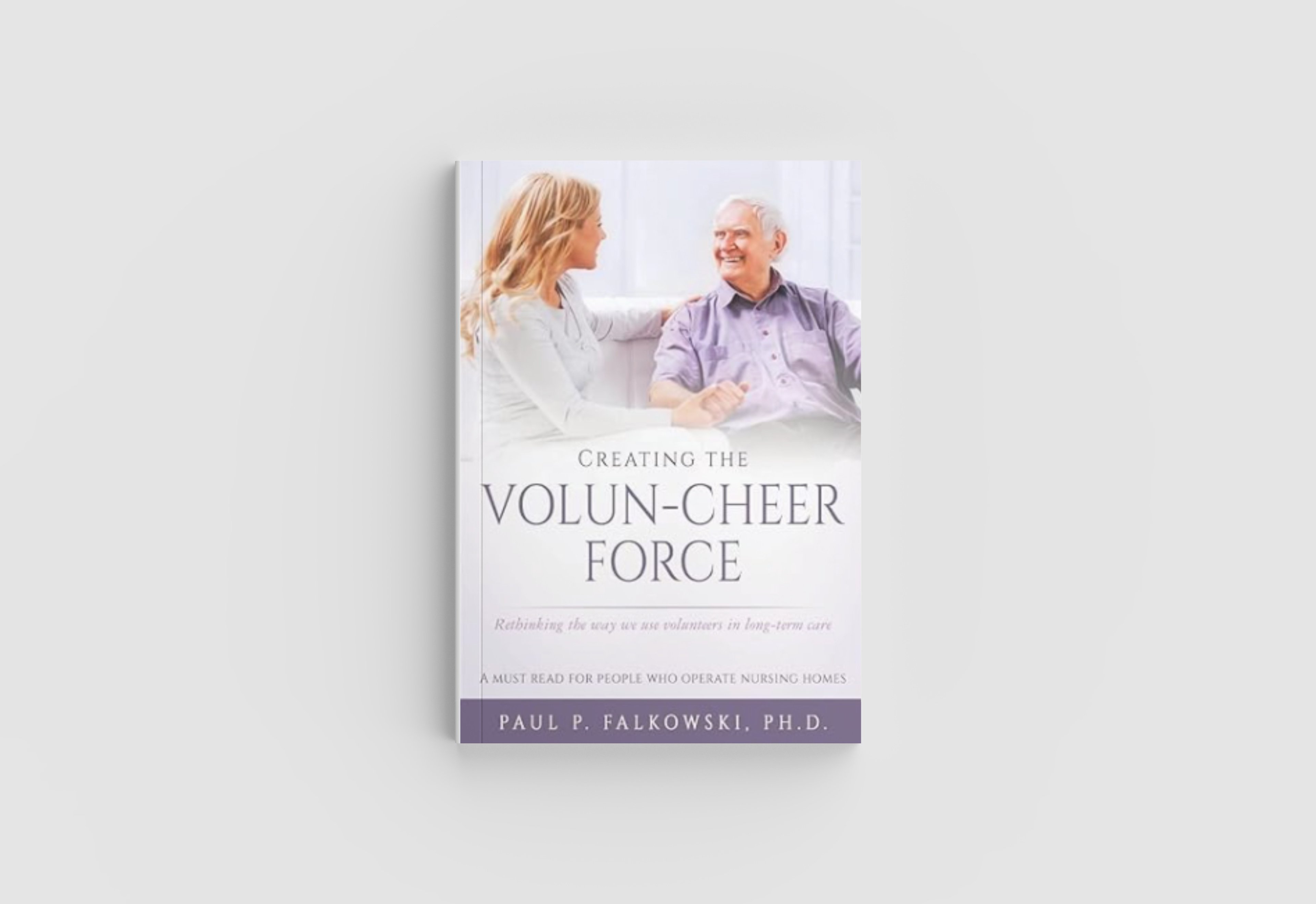
By Paul P. Falkowski, PH.D.
The seventh in a series of Better Impact Book Bites A taste of great books worth consuming.
This book was written by someone who had a transformative volunteer experience. As leaders of volunteers, we cannot fully understand how service can be life changing until we experience it. Until then, we should pay close attention to authentic stories like this one.
Paul Falkowski was directing a choir when someone suggested performing at a local nursing home during the holidays. After that initial performance, Paul decided to keep returning and learned first-hand the dire need nursing homes/care homes have for volunteers. What began as a single activity became his passion. Now Paul has a PhD in Gerontology from the University of Nebraska at Omaha. His dissertation “Volunteer Programming Impact on Long-Term Care Facilities” is available online and has been downloaded over 6,000 times (see related links section). He currently teaches gerontology courses with a focus on volunteerism, in addition to founding the National Association of Long-Term Care Volunteers.
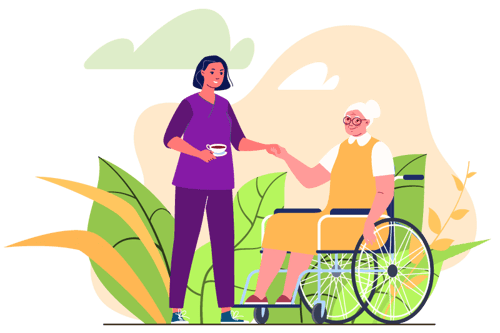
This book is Paul’s way of sharing more than 25 years of experience he’s gained vetting and training volunteers in nursing homes. Paul’s original idea was to create a work-ready resource to enhance the quality of life in nursing homes by engaging volunteers. For those sensitive to this topic, I’ll give a warning about this book (as with most books on aging) given that it will include a few specific stories involving end of life depictions. Paul ran a volunteer program where he trained adult volunteers and matched them to nursing home volunteer programs.
I first met Paul (virtually) when he interviewed me for his VolunCheerLeader Podcast. We discussed how my bachelor’s was in applied gerontology (the study of aging and working with older adults). As a child I loved visiting my maternal grandmother and was present for her end-of-life journey in a nursing home as a teen. I also absolutely loved watching the TV sitcom The Golden Girls. Those memories influenced my desire to work with older adults. During college I had several fantastic volunteerism experiences with older adults, which led me to believe that would be my career path and the reason I majored in gerontology.
I will admit, by page 20 of this book I had shed a tear. Paul stirred up memories for me – not only about my experiences as a volunteer with older adults – but of being in my grandmother’s nursing home. Paul noted there were an estimated 1.3 million staff vacancies in long-term care before COVID. In selecting this title, I wanted to choose a book that would shine a light on a sector of volunteer engagement that is overlooked and under-resourced. I chose this title because it came from the voice of a first-time volunteer turned advocate.
First, those who work with older adults should pick up this title, whether your organization has a volunteer program or not. Second, if you’re job searching in the field of volunteer engagement, you may decide to apply for a job in a healthcare setting, and this will give you great insight on questions to ask when interviewing. Third, if you have someone in your life you will care for in the future, this book brought up great points about older adult services from a different perspective. Fourth, anyone interested in learning about volunteer programs in different settings will find these structures interesting.
This book would be a great gift for someone working in or applying for jobs in nursing homes.
“Somewhere around the middle of the 21st century, there will be some 100 million people over the age of 65 who, depending on their health status, 1 out of 4 may be looking for long-term care services.” If you do the math, this fact includes Millennials who will turn 65 as the last of the Baby Boomers are turning 85. I, myself, am a “geriatric Millennial” since I was born between 1981-1985. This statistic will impact many concerns, including resources from government, nonprofits, social service agencies, and volunteer programs. We are still living in an arduous time around the globe, but the future will be here before we know it. How to respond to the needs of older adults is an incredible opportunity for high impact volunteerism.
“It was obvious that while we were there singing, we not only helped the residents celebrate the holiday, but we also brought them a deep sense of joy and meaning.” The first experience of being present in a nursing home compelled Paul to get “hooked” on service to nursing home residents. He allowed himself to be present in the moment on stage and followed his heart. As volunteer engagement professionals (VEPs) we may have a moment like this in our first month on the job, where we pause and look into the eyes of those we’re serving and know we are in the exact place we’re supposed to be.
“I realized people living in nursing homes had something to offer the volunteer, starting with giving him or her a new perspective on what life is all about.” Paul heard a story from one of his volunteers (Dave) about an experience at his assigned nursing home that had him stop in his tracks and weep. When a volunteer is showing vulnerability and explaining an emotional moment, VEPs should stop and listen. Their experience could prepare us to work with a new volunteer or troubleshoot a future issue but more so, it allows us to feel the humanity that lives in our work. Yes, we want to impact the clients, but how can we track the impact the volunteer placement is having on the volunteer?
“Increasing community engagement raises awareness of the aging process while mitigating negative images of the nursing home.” We know volunteers talk about their experiences. We’ve been trained word-of-mouth recruiting is one of the best ways to find like-minded volunteers. I’m not sure we give enough credit to the other effects of word-of-mouth.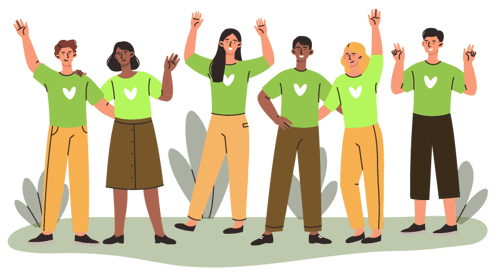
For organizations that don’t see themselves as having advocacy as a mission, they may miss this point. When nursing home volunteers talk about their experience, they pull back the curtain on what it’s like to go into a long-term care community. In my own program, we had college volunteers who told us they had never interacted with an older adult before. They didn’t have grandparents or anyone in their life who was over 65 years old. Their experience volunteering with older adults was completely new and changed the way they viewed this segment of the population.
I think the same can be said for volunteers working in nursing homes. They’re telling their friends and family about the people who live there, who spend their days inside, and why their giving of time isn’t a negative thing. From Paul’s description, many often left happier and more committed to returning. Page 32 touches on “resilient communities,” which could be a whole other book. It’s dangerous when leadership assumes volunteers are cheap labor and don’t see the need for community connection within these long-term care facilities.
“Once again, a valuable asset, the trained volunteer, who could be trained to provide person-centered care was pushed to the sidelines.” This section brought up situations after a 1987 legislation that kept volunteers out of service in nursing homes. Since I’ve never worked extensively in a healthcare setting, I tried to grasp the mentality of leadership in these facilities who did not find value in volunteering. When we join organizations that are not pro-volunteer, it can be startling when coming from vastly different work cultures. Paul credits the social workers and direct-care staff for all their expertise but knows complementing their work with volunteer support could be a game changer for the lives of residents. What other sectors have built too many barriers for volunteering?
“An authentic relationship requires an intimacy developed over time.” One of the main points Paul makes throughout the book is that paid staff at all levels in nursing homes are extremely busy and turnover has always been an issue. They often don’t have the time to nurture bonds with residents. Who does have time? The unpaid workforce of community members assigned to limited tasks across nursing home systems all over the country. People-centered care includes ensuring the older adult feels loved, accepted, cherished, and seen as a “whole person.” It’s hard for someone who oversees dozens of residents to achieve that goal on a shift. We know during the pandemic a high percentage of volunteer programs shut down, especially in healthcare.
“We started by hiring a great volunteer coordinator. Great volunteers need great leadership to thrive and to grow in their roles.” If you begin volunteering or caring for someone in a nursing home, I encourage you to find out more about their volunteer program. Pressure leadership to create a paid position to manage volunteers if one does not exist and give them a copy of this book. Through all my training as a CVA (Certified in Volunteer Administration) I know a professional volunteer administrator can solve problems and build capacity for the most important missions. I saw a connection to that knowledge and the seven domains of wellbeing described on this page. Review it and let me know if you agree.
“Professional care staff needs to be included in the planning and execution of the volunteer program so that you have their buy-in from the beginning of the process.” This sage advice fits all organization types. Paul’s point was to combat the fear volunteers will replace paid employees. This is common among staff who’ve never worked in a harmonious environment where volunteers complement the work of paid staff, and their united force moves the mission forward. This section gives you answers to several concerns leadership may have, including volunteer programs are expensive (page 88).
“While talking with an older woman residing in one of the communities I visited, she observed, “I have a lot of people around, nurses and staff but there is no one here just for me.” I could almost see this moment between Paul and a nursing home resident. I think of the older adults who have no visitors and feel this daily. We know through training as a VEP clients often feel different about receiving service from a volunteer than from a paid staff member. The meaning behind their work feels different when the person isn’t required to be there. One person can make a huge impact. I looked up how many nursing homes were near my workplace. Could I become a friendly visitor on my lunch break? What if everyone found one person they could visit regularly and be a volunteer “just for them?”
“I wrote and developed a 16-hour training program that prepared the volunteers for nursing home experiences.” While this training probably took many forms in the years preceding its creation, I can tell all of Paul’s listening and research went into it. He addressed the theory concerning the aging process, myths about aging, the various levels of care provided by nursing homes, and communication techniques.  This sounds like valuable information to know. Even if someone didn’t find their match at the end, they would probably think differently about nursing homes. Paul admits to setting the bar high in the rigorous onboarding, but his hope was to send the best candidates to nursing homes, i.e., those willing to jump for the high bar. Finding volunteers with a deep inner passion for your cause is not easy. We’ve all experienced this, especially coming out of the pandemic.
This sounds like valuable information to know. Even if someone didn’t find their match at the end, they would probably think differently about nursing homes. Paul admits to setting the bar high in the rigorous onboarding, but his hope was to send the best candidates to nursing homes, i.e., those willing to jump for the high bar. Finding volunteers with a deep inner passion for your cause is not easy. We’ve all experienced this, especially coming out of the pandemic.
“These reactions may accurately describe volunteer programs with volunteers who are not adequately screened, trained, and managed by a professional volunteer manager. What I have learned is, you put a professional volunteer manager in place and set your expectations high.” When Paul brought his idea of mobilizing volunteers in nursing homes to the ears of medical professionals, they would claim volunteers can’t be reliable. Volunteers would rather choose a more pleasant activity than return to a nursing home.
What a bummer. Had these professionals been burned by volunteers in previous organizations? Where does the bias live that says volunteers are unreliable? This section goes on to highlight how volunteers in healthcare have become severely restricted in what they could and could not do based on negative stereotypes of volunteers, as well as fears of liability.
“Sorely needed policies and regulations meant to improve the care of older adults, inadvertently and severely limited a valuable resource for the nursing home - the volunteer.” Paul does a wonderful job throughout the book of including the facts of the history of engaging volunteers in nursing homes, from legislation to research. I can’t capture them all here, but it brought up a great point. For our own sectors (e.g., museums, youth organizations, government, animal welfare, social services, and many more) we should understand the history of volunteers, so we know when change is needed. If you’d like to know more about the history of volunteering in the US, check out “By the People: A History of Americans as Volunteers” by Susan J. Ellis and Katherine Campbell. You can get it for FREE from the Ellis Archive (see related links section). Susan’s other writing is cited in this book.
“We recognize the frail older adult not as an object to be acted upon but as a human with whom we live in relationship.” I appreciate Paul’s description of volunteering as the relationship between two people that exposes the real and meaningful needs required for a high quality of life for the nursing home resident. The bottom of this page was the second time I shed a tear. The description of losing your personhood is all too haunting after thinking of the volunteers Paul was sending into service. Many VEPs are placing volunteers into situations where clients have lost access to their homes, families, pets, and/or mobility. When a resident explains they have no more reason to live, that sentiment is difficult to counter when no one visits. There are too few volunteers. But there is hope because volunteer programs give hope.
“It is clear that nursing home residents who are engaged in ‘authentic partnerships’ have fewer falls, less frequent urinary tract infections, require less medication, and express a higher level of well-being.” Wow. By having volunteers, so much about residents’ quality of life can change. This information is pivotal in the discussion to create pro-volunteer nursing homes. Paul gives examples of several pro-volunteer organizations that serve older adults and all of them had great outcomes.
“Can’t someone do something about this? We want just one person to talk to and do ‘normal’ stuff, not big activities where everyone participates at once.” The request from nursing home residents to have one person to talk to was a recurring theme Paul heard from interviewing volunteer coordinators across care home systems. In my recent podcast interview with Rob Jackson my final advice was to be prepared as VEPs to act on behalf of volunteers. When we receive requests, complaints, or confidential concerns we need to prepare to do something about it. This page brings up a great point. As VEPs we also receive feedback from non-volunteers that could impact decisions about volunteers within the organization. This feedback can create the sense of urgency we need to move up our objectives.
“I feel like I’m getting so much more than I’m giving.” Paul interviewed a wide selection of volunteers and paid staff for this book. The above quote was a recurring theme during volunteer interviews. Even when we frequently hear a phrase from volunteers, we must treat it as unique feedback and the connections are real. It’s hard to describe the above feeling, what words can you use to capture the return on investment of someone’s devoted time and talent? On a rough day, take the words of a volunteer and keep them close!
It took me a while to get used to admitting I’m wrong the moment it occurs. In college I’d make excuses and not want to hear myself admit a fault. Once I entered the working world of volunteer engagement, I got comfortable. I feel it saves me a lot of time to admit my mistake and begin to make corrections. “There is a certain degree of satisfaction in having the courage to admit one’s errors. It not only clears the air of guilt and defensiveness, but often helps solve the problem created by the error.” I think this helps win friends because people tend to appreciate vulnerability, especially if they have a boss who never admits they are wrong.
“The volunteer’s desire for professional training and on-going training repeatedly appears in the research literature.” I agree volunteers want to know what they're doing and want to maintain some sense of knowledge about their volunteer role. Even with my background I would expect a nursing home to provide me with a variety of training before I met my first resident as a new volunteer. If it was decided for me to stay long-term, I’d hope to have opportunities to refresh my skills and maintain knowledge of policy and procedure changes in the long-term care community as it relates to residents.
“I came to believe that one of the critical roles of older adults in society is to show us how to create and live in a community. People form community when they decide to remain together, determined at preserving their relationships takes precedence over their agreements and disagreements.” I think as VEPs we frequently hear about community, how it’s made, kept, and different across the world. I do think we need to spend more time reading the research and understanding where our volunteer programs and volunteers see themselves in communal spaces. Paul shares many of the revelations he’s had over the years doing this work, and each one I felt was authentic and rooted in his research and lived experience.
“Life is what happens during the care, the task, whatever is going on, everything can become a moment of connection. This leads to the natural creation of genuine friendship.” Most long-term volunteers in nursing homes are adults. These adults may need a refresher on how exactly to build an adult relationship. Volunteer training can set them at ease and explain the process step by step. The nursing home resident may have gone without a connection with a new person for years. VEPs can facilitate so many experiences for volunteers. What better one than making a friend?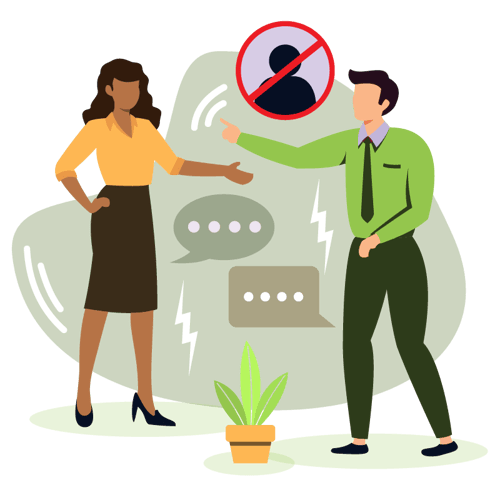
“We cannot attract young people into gerontology if we don't give them an opportunity to be exposed to caring for older adults.” In the previous quote I mentioned most volunteers in this field are adults. At the beginning I shared I had several volunteer opportunities as a teenager where I was able to work closely with older adults. Each organization must find a balance, but I definitely agree with Paul – the exposure to younger volunteers is paramount to the sustainability of future nursing home volunteer programs and to filling the paid positions. Intergenerational volunteer programs are such a gift for everyone involved.
“Another argument that I use is that the volunteer becomes a bridge between two communities. The volunteers become the conduit or connector.” This page had a great interview with Paul and Sabrina that place value on the work of volunteers. They go out into the world and share the reality of the nursing home experience and the deep need for people to get engaged and then they go inside the nursing home and tell the residents what’s happening and about the vibrant life of the community. It could be a burden, but the volunteers described in this book do it with such compassion and love.
“I learned that developing a program starts with setting standards.” The experience Paul had with training and managing volunteers was of a high level and probably crucial to his understanding of the future needs for nursing homes. Paul set the standard for incoming volunteers he would train, and he wanted to send the best out to residents. I think when taking on new volunteer engagement positions, we need to find out what the standards are within the potential organization and make sure it’s on a good path. We know it’s so difficult to create change while building a new program.
Oftentimes when I read a book, I pause and my age or my place in time offers context. As an older Millennial, I now have parents in their 60s and this book hit me differently than others because I will oversee their care in the future. I could benefit from understanding the world of senior care now to prepare and advocate for change before they have a need. How do we get ahead of some of these issues, so we do not face the same struggles?
I think applying volunteerism to society’s biggest challenges is never easy. In some settings, grassroots movements can take great hold of causes, but in these highly structured companies like nursing homes, the methods must be strategic. I think Paul’s new national association could be a great bridge between his generation and mine to address volunteer engagement in nursing homes. I understand the warning call and I hope this review and a new audience picking up this title hear it too.
Several aspects I like about this book are the quick history lessons about where nursing home policies have come and gone and how it affects volunteers. I also enjoyed the interviews with paid staff and “super” volunteers – especially this quote, “we cannot attract young people into gerontology if we don’t give them an opportunity to be exposed to caring for older adults.”
This is a large part of what volunteer engagement means to me: to open doors, let people in, welcome those who would not normally seek out service, and let them fall in love with what we do and who we serve. This book is a good read for volunteer managers who work in senior care, administrators who oversee decision making in senior care, those who may be interested in a career in senior care, those who want to promote volunteer programs within senior care, families who want to advocate for more engagement for their loved ones in a nursing home, students exploring career paths in volunteer management, and volunteer managers who want a new perspective.
As Paul pointed out, “the number of older adults needing long-term care will only continue to grow, the need for increased community involvement will only increase, as well as the need to establish the infrastructure for promoting and supporting nursing home volunteer programs.” How many times do we drive by a long-term care community and not once think of the people inside? What if those people had an advocate who could reach past their walls and tell the community, “We need you here.” Reading about how Paul went from knowing nothing about nursing homes to running a volunteer matching program called Community 360° for 26 years is amazing and proves some “super” people don’t simply ask, “can’t something be done about this?” They do it.
Thanks for stopping by this review! I had a wonderful time going back through this book picking out the pieces I connect with as a volunteer engagement professional. Thank you, Dr. Paul Falkowski, for this book, your service to older adults, and inspiring more long-term care facilities to hire an outstanding volunteer manager and set the bar high for their volunteer program.
Featured Posts
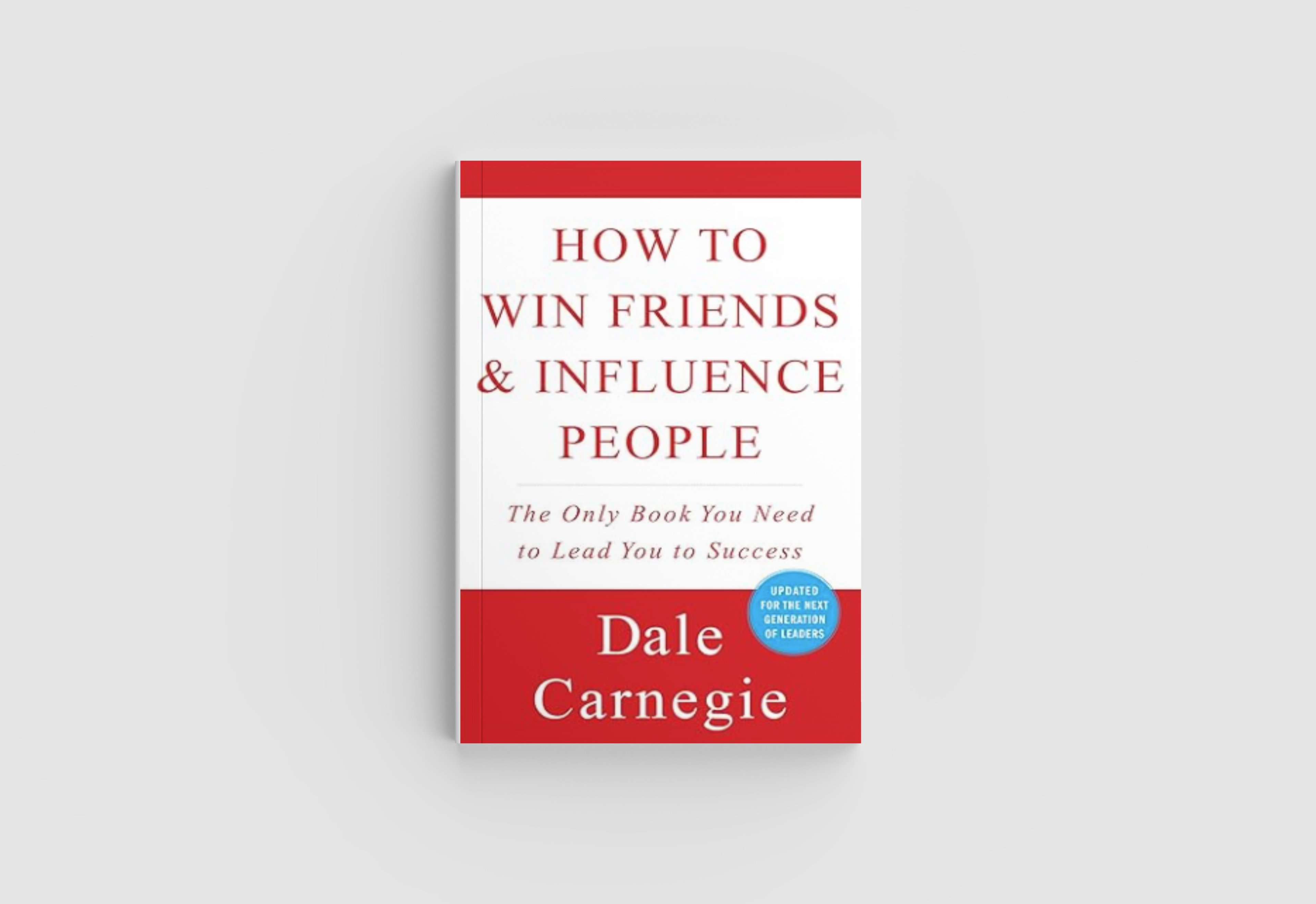
This Month’s Selection: How To Win Friends & Influence People By Dale Carnegie The sixth in a series of Better Impact Book BitesA taste of great...

This Month’s Selection: The (Help!) I-Don't-Have-Enough-Time Guide to Volunteer Management By Katherine H. Campbell, CVA & Susan J. Ellis The fifth...
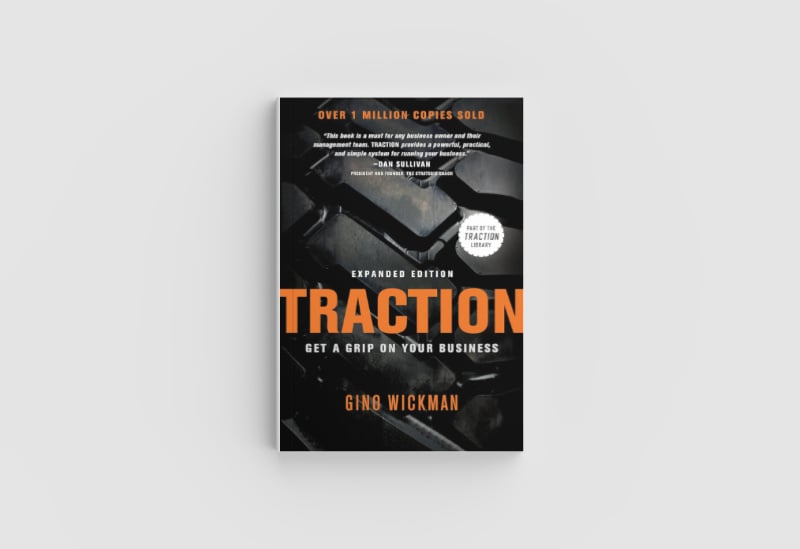
Why This Book: During my job search, many postings listed “has an entrepreneurial spirit” as a skill. Funny enough, when out at dinner with a group...